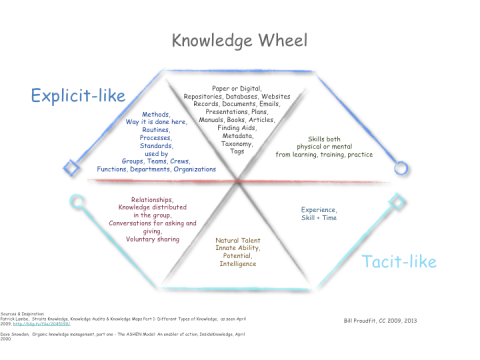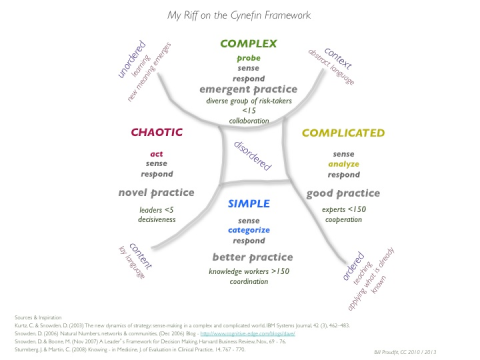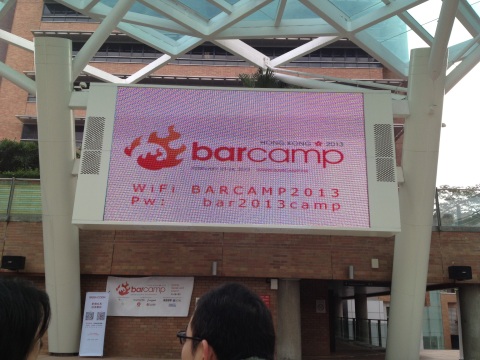I went to the KM Singapore 2011 pre-conference master class on 31 August and then the 2-day conference on 1st and 2nd September. Take a look here for a run down of the conference and video interviews with the main speakers from the social media reporter Pier Andrea Pirani. Here are presentations and other materials from the conference.
The master class and conference were excellent; better than any thing I’ve seen done in Hong Kong in the knowledge management area. There were about 70 people at the master class and 180 people at the conference. The conference theme was ‘Riding the Wave of Experience’ and it built around having practical advice from people who had done things before like build intranets, how to facilitate a social media campaigns both inside and outside a big global organization, how to avoid the common traps of a knowledge management approach which has the best of intentions but so frequently fail so miserably, how to deal with organizational blindness and ignorance with even the smartest people and how to run a knowledge capture and transfer initiative. IKMS, Information & Knowledge Management Society, did a great job finding diverse speakers both from Singapore and from aboard. Throughout the conference there was good use of social media, such as an active twitter wall and video interviewing during the conference. This was the 1st time I’ve seen these kinds of social media done truly successfully at a conference.
On the second day, I ran two 45-minute case clinic sessions on Creating and Running a Records Management Programme. I had done a blog posting on 25 August in preparation for this case clinic. Following is a description of what I tried to explain and some of the questions and responses. At the first session there were about 20+ people and at the second session about 10+ people. These break-out sessions were run concurrently on both the 1st and 2nd days of the conference. It was a good idea and got us away from the ‘dreaded talking heads’. I like listening to good presentations but not for a whole day.
I put-up some A3 size sheets of paper on the wall and a flip charts. I learned blue-tack will hold a piece of A3 size paper to a velvet-covered wall.
1. Definition of Records
2. My Riff on the Knowledge Wheel

Knowledge Wheel – Updated
3. My Riff on the Cynefin framework

Updated 2013 ~ An Interpretation of the Cynefin Framework
4. Template Letter to Law Office on Record Keeping Brief
5. Template Records Retention Schedule TOC
6. Template Records Retention Schedule Definitions
7. Template Records Retention Schedule Master List
8. Template Master Records Retention Schedule
9. Template Records Retention Schedule based on legal requirements only
Here is a run-down on my ‘case clinic’.
– A brief introduction about myself – 30+ years in records management, mostly in Asia with some time in Europe and the US – have 10,000 hours of experience so I guess I’ve reached Malcolm Gladwell’s expert level
– I believe what records management (RM) adds to the mix of knowledge management, content management, information management and library science is a way of separating the ‘useful’ from the ‘useless’. Not all knowledge is of equal value although it seems that many times this is the perspective of knowledge management; if it is offered up as ‘knowledge’ it must have long term value. The idea that some tangible piece of knowledge expires and can then be disposed is unique to RM.
– Pointed out that many times over the past 2 days we had heard people talk about ‘repositories’ full of junk, ‘repositories’ which no one used. If they used RM concepts of scheduling and expiration then these ‘repositories’ would be more useful and not full of junky and useless knowledge artifacts.
– Gave them 5 minutes to read the materials on wall and flip charts
– Explained the definitions of ‘records’ 1. Definition of Records
o Emphasized that having a policy with a clear ‘record’ definition was required. They would have many questions such as:
? ‘what is a record’
? ‘what do you mean by record’
? ‘does it include email’
? ‘does it include drafts’
? ‘does it include copies’
o Pointed out that the organizational definition included ‘promotional items’ – tangible objects, posters, video tv commercials, radio broadcasts, uniforms used during promotional campaigns ~
o ISO definition has always seemed a bit narrow to me but it is adequate
o ARMA definition longest and with an emphasis on the potentiality for a lawsuit. This is because ARMA is an U.S. dominated RM organization. Risk from lawsuits are not unique to the US.
– Used the Knowledge Wheel to explain where RM sits in KM. 2. My Riff on the Knowledge Wheel. Clearly it’s a part of Explicit Knowledge ‘Paper or Electronic, Documents, Books, Manuals, Vidoes, Audio, Databases, Systems, How to use them’ in the centre top sector. These are what I choose to call ‘knowledge artifacts’, which is taken directly from Snowden’s original ASHEN framework.
– However, to have a RM programme requires paying careful attention to the ‘Methods, Way we do it here, Routines, Processes, Standards, Teams & Crews’ in the left-hand sector. RM is always very closely connected to “how we do it at this place” so I recommend strongly you don’t try to change how they do it without having a very good idea of what is happening on the ground.
– Also, a RM programme must foster ‘Skills both physical and mental from learning, training and practicing’, from the right-hand sector. Tagging an electronic document or printing a label for a file folder, reading and using a records retention schedule, participating in an annual records day are all skills that the RM programme needs to teach and people need to learn. You will need to teach these things over and over again before people learn them: they need to become part of the mental model that people have about managing records in their organization.
– The RM programme gets supports from the Tacit Knowledge sectors in the bottom part of the Knowledge Wheel but it is very important to remember that records management has, at best, only an indirect role in tacit knowledge creation, sharing and use.
– I place RM in the ‘Simple’ and ‘Complicated’ domains of the Cynefin Framework, see 3. My Riff on the Cynefin Framework. RM is most useful for groups with >150 members and it may be helpful for groups of experts <150. I cannot see RM being very useful in the Complex domain because the groups are small and the time frame of the decision making is likely quite short for each iteration of ‘probe, sense, respond’. In the Chaotic domain there is no time to be searching thru the knowledge artifacts, although this seems to be a favourite Hollywood film or TV script scenario; ‘get me the file, the answer is found, the disaster is averted’. Does it every really happen this way?
– Explained the letter requesting a record-keeping brief to Outside Counsel, see 4. Template Letter to Law Office on Record Keeping Brief. In-house counsel seldom does this type of legal research work. It may not be that useful to even let in-house counsel try because they are unlikely to have the skills and necessary knowledge. It is vital to specify the type, scope and purpose of the record-keeping brief. Be sure to get a quotation first and specify there will be at least 3 drafts. The final record-keeping brief must be clearly written because it would be made transparent to all employees as a supporting document for the records retention schedule. Here is an example of a records retention schedule mapped back into record-keeping briefs, see 9. Template Records Retention Schedule based on legal requirements only.
– Explained how to collect business/organizational requirements needed using facilitation techniques
o focus groups
o anecdote circles
o card-sorting exercises
o ask questions like which records do you think are important, which are not important, what format are the records in, where are they kept
o very important to talk to all levels of staff, not just senior manager, not just line staff
– Conduct records inventory and compile statistics on type, format, volume, and ownership and then compare these results to what people have said during the facilitation exercises. It is quite likely what they have told you is different from what you think the records inventory and statistics are telling you.
– Take the results from the record-keeping brief and the business/organizational requirements and create a Records Retention Schedule. This is an iterative process that will take several rounds. It’s important to get to the ‘first usable draft’ and then keep revising it on at least an annual basis.
– Explained the RRS TOC ~ the first 2 levels are only for navigation, see 5. Template Records Retention Schedule TOC.
– Explained the RRS Definitions – Primary Records, Temporary Records and Disposal Suspension,see 6. Template Records Retention Schedule Definitions.
– Explained they needed some high level tags/categories for the Master Records Retention Schedule, see 8. Template Master Records Retention Schedule.
o Historic
o Fiscal
o Date Compliance
o ISO
o Legal
o Reference
o General
– These are only useful when they can be applied consistently to a group of records that are described by use, function or purpose. This is where the more descriptive tags/categories are useful. Explained the RRS tags/classifications ~ how a classification was chosen, how it linked to the RRS 7 categories, Office of Record and the Notes which linked back to the Legal-keeping brief, see 7. Template Records Retention Schedule Master List.
– Emphasized that records are both paper and electronic and that frequently the paper records are more valuable/useful because of their organization. The ability to put different documents from disparate sources together, make notes on them, physically organize them with tabs and dividers is the real advantage of a paper file.
– Emphasized that senior management would not simply continue to buy more storage space, both hard-copy storage space in the office and off-site box storage or electronic storage archives, even if it is very cheap. Very cheap is never going to be ‘ZERO’ so it is likely that at some point you will no longer be allowed to keep adding various types of storage.
– Explained how standardized regular processes needed to become part of the ‘Way we do it here’; to apply the RRS tags/classifications to documents and file folders, move to archives as a regular process, dispose of them according to the schedule. Running records management days is a very good idea. When you run records management days it helps to recognize the amount disposed, moved to hard-copy and electronic archives by people, teams and departments.
– Telling people how many emails they have, how many electronic files in both personal storage and in departmental and team repositories, how many paper files in active office filing space and how many boxes in off-site storage would help people understand the scale and scope of the records management tasks.
Questions and comments from the groups:
1. Do we have to follow the schedule?
My answer: Well, if you go thru the process of making a RRS it isn’t very practical to not follow it. There is a tendency in RM to make a policy, make a schedule and then not follow them. Therefore, the RM programme never ‘gets legs’. Also, it can be quite dangerous to the organization to have a RM programme that isn’t actively followed.
2. Most people just want to save everything.
My answer: If they save everything then it becomes very difficult to find anything. If the haystack is smaller it is easier to find the needle. Remember what Patrick Lambe said in his presentation about the ‘tyranny of the collective’ and ‘mutual ignorance’. Don’t presume to know what ‘everybody’ wants to do. In my experience, if you give people a set of practices, processes, a records retention schedules then they will willingly dispose of expired records.
The response was: Yes, but it is just your opinion.
3. We just want to get better search engines and save everything.
My answer: Even the best search engines are not very effective with out tagging and structure around the records.
4. There are not many legal risks in Singapore involving records.
My answer: I don’t think this is true. As a common law jurisdiction the ability to request records as evidence is enshrined in Singaporean law. If you sell any product then you have legal risk from records. If you work in any sort of financial services business you have legal risk from records.
The response was: Yes, that’s probably true. We do sell things.
5. What do you do with email?
My Answer: Get across the concept that the email does not belong to the individual. They don’t get to take it with them when they leave the organization. Be prepared to hear many reasons why ‘I can’t do this’ with my email. Restrict mailbox size. Stop the use of personal archiving ‘pst’ files, they just cause many problems in the long run. Buy and implement email archives so your MS Exchange servers are more efficient but be sure to require tagging against the RRS categories. Remember that IT people typically do not have long-term perspective; they are only looking for the quick fix to the problem right in front of them; the IT solution, buy an archive, install and fill it up. They are thinking they won’t be here when the archive is full.
6. Should we have a central group that receives all records and manages the records?
My answer: It can work in a specialized situation like a law firm, court, hospital but in most organizations and businesses with a distributed work model it is not feasible or practical.
7. We cannot make people dispose of records.
My answer: You can certainly encourage them. You just have to be consistent, practical, offer real solutions and help them thru the process. I use to regularly facilitate the disposal of around 40% of paper and electronic records every year. Once again, remember what Patrick Lambe said in his presentation about the ‘tyranny of the collective’ and ‘mutual ignorance’. Don’t presume to know what ‘everybody’ wants to do. In my experience, if you give people a set of practices, processes, a records retention schedules then they will willingly dispose of expired records.
8. Can we use bar-codes and RFID (radio frequency identification) on documents?
My answer: Bar-coding is used for off-site hard-copy box storage in most cases. Bar-coding individual documents is only practical in those cases where the documents are very important and there needs to be a lot of control around them. I’ve done it for legal contracts. RFID could be used for boxes but I’ve never done it. Using is on individual documents is likely going to be too expensive.
9. Instead of disposing of the paper records can we scan them and keep them ‘just-in-case’ we need them?
My answer: You could but the cost is huge. How are people going to find the scanned images? Creating an index, tagging structure, taxonomy is not a simple task and they need to be maintained. In the end you will have put in a lot of effort and money for something that is not very useful.
Conclusion
People at the case clinic asked the same sort of questions about records management I’ve heard for years. This is not surprising. Records management is one part of ‘doing knowledge management’. Organizations mistakenly believe they are doing records management when they build a repository, create tagging terms and train people how to use this repository. Without the records retention schedule summarizing both legal and business/organizational requirements it is not a records management programme. Good RM processes help people find useful tangible knowledge artifacts and ensure that only those, which are truly useful, are being retained in various kinds of electronic and hard-copy repositories.


